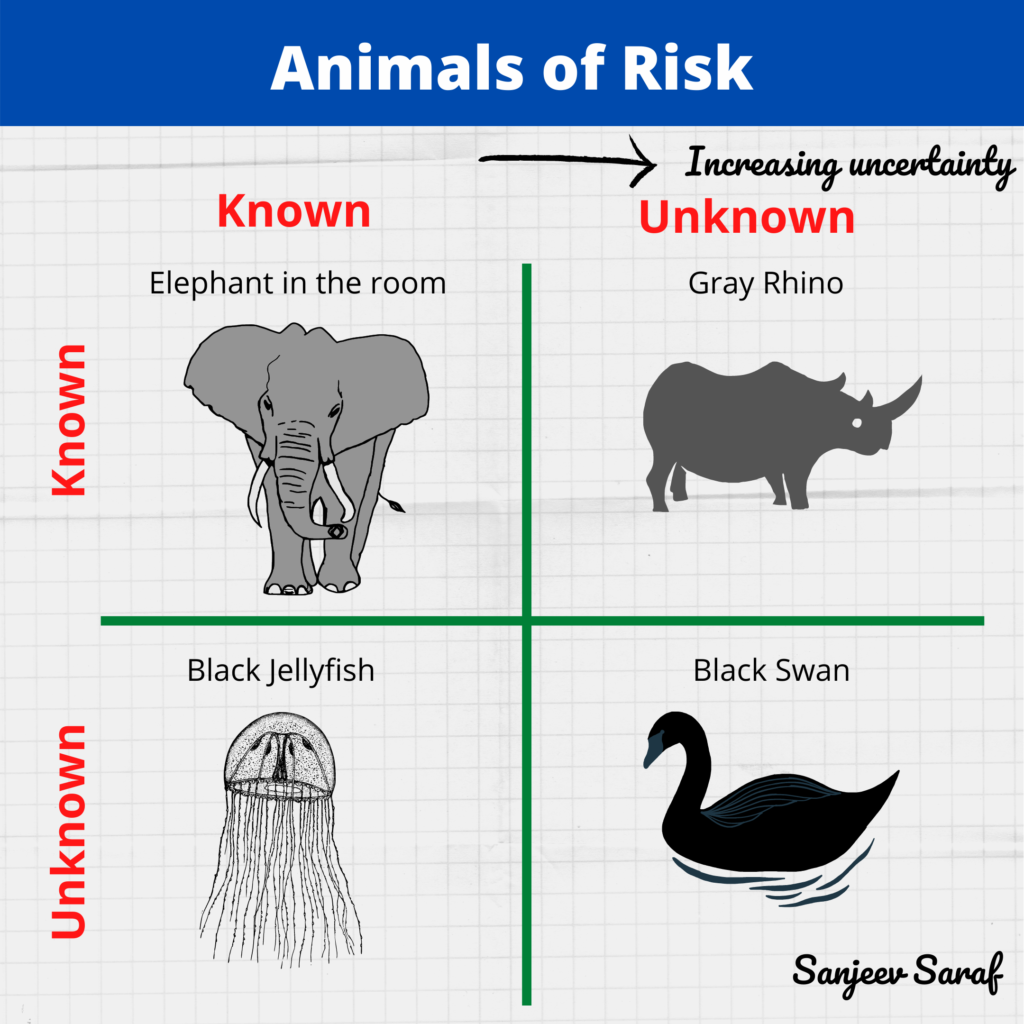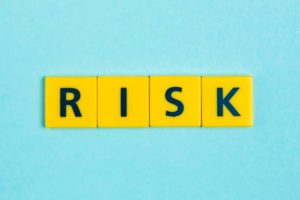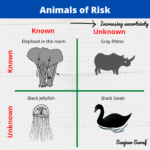One way to think about risks is in terms of uncertainty.
Donald Rumsfeld, United States Secretary of Defense, explains the limitations of intelligence reports and issues surrounding risk-based decisions.
As we know, there are known knowns; there are things we know we know. We also know there are known unknowns; that is to say we know there are some things we do not know. But there are also unknown unknowns – the ones we don’t know we don’t know.
Donald Rumsfeld
Animals of Risk
Not all risks are created equal.
It’s worthwhile to think in terms of uncertainty surrouding the risks in making a decision.

- Elephant in the room: Well-known obvious risk that no-one wants to talk about or address.
- Black swan: Black Swan were presumed not to exist. Till a Dutch explorer spotted black swans in Australia. In risk world, black swans represent highly improbable events that cannot be predicted.
Popularized by Nassem Taleb’s book The black swan
- Gray rhino: A gray rhino is a highly probable, high impact yet neglected threat: kin to both the elephant in the room and the improbable and unforeseeable black swan.
Michele Wucker’s book, The Gray Rhino: How to Recognize and Act on the Obvious Dangers We Ignore.
- Black jellyfish: Unintended risks arising from known phenomenon. In 2013 a nuclear reactor site in Sweden had to be shutdown from jellyfish blocking water inlets. Warmer temperatures from climate change have belived to create favorable conditions for jellyfish populations to rapidly increase.
Lisa-Ann Gershwin’s 2013 book Stung!: On Jellyfish Blooms and the Future of the Ocean.
Bottomline
How you think about risks impacts your decisions.
What animal metaphor would you use to describe risks below:
- well blowouts
- climate change
- thinning pipeline wall
- COVID-19
If you are using same risk strategy irrespective of uncertainty, prepared to be disappointed.
Irrespective of what animal metaphor you go with, we all would be better served digging a bit deeper into risk decisions.
The point of animal metaphors is not to argue about animals but better equip risk managers to learn about underlying issues, take “good” risks, and deal with potential downside.
The point of metaphors for risk is not to argue about animals but better equip risk managers to learn about underlying issues, take "good" risks, and deal with potential downside.





